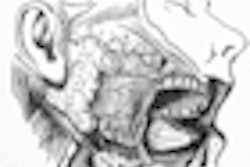No causal relationship between oral bisphosphonates and osteonecrosis of the jaw (ONJ) has been has been established, according to Christy Jones, attorney for Merck, during closing arguments February 10 in the Rosenberg v. Merck Fosamax trial.
Allison Rosenberg, 67, says she used Fosamax from 1999 to 2006 and that she suffered various jaw problems and complications following a tooth extraction in December 2005. Merck has maintained that Fosamax did not cause these problems and that it provided appropriate and timely information about Fosamax to the medical, scientific, and regulatory communities.
Jones told the jury that Merck started studying Fosamax in 1988 and found no early evidence that Fosamax caused bone cells to die, according to a recap by Courtroomviewcom.
The first report of osteonecrosis was in September 2003, which involved a cancer patient taking alendronate intravenously, Jones said. It wasn't until 2006 that Merck received information about osteonecrosis of the jaw, she added.
Rosenberg's lawyer, Paul Sizemore, offered a different interpretation.
"We're here because Fosamax killed a piece of Ms. Rosenberg's jaw, and Merck new it could happen and didn't warn about it," he said in his closing arguments. "Merck knew that this drug could cause jaw bone death, and it did, in my client."
Even though Merck had internally acknowledged 80 adverse reports in June 2005, the company told Rosenberg's prescribing physician in October 2005 that there had been no reports of ONJ associated with Fosamax use, argued Sizemore.
The jury began deliberating the case February 10.



















